Preliminary Research on Response of GCr15 Bearing Steel under Cyclic Compression
Abstract
1. Introduction
2. Experimental Methods
2.1. Materials
2.2. Experiment
2.3. Measurement and Observation
3. Results and Discussions
3.1. Alternating Load
3.2. Contact Point in Plate-Ball System
3.3. Hardness
3.4. Microstructure
3.4.1. No DER Formation
3.4.2. WEA Formation
3.4.3. Interaction of the Matrix and Inclusions
4. Conclusions
- In the cylinder specimen, hardness increases slightly after undergoing cyclic compression load, and the degree of hardening is very low compared with the rolling contact condition. In the plate specimen, obvious hardening was observed. The dominant stress is orthogonal shear stress, and the degree of hardening is higher than that under rolling contact condition.
- In the plate-ball system, oil film is produced locally in the contact area. The size of the oil film is smaller than that of the contact area, which indicates that some conditions need to be met for the production of oil film.
- Although according to the calculation based on existing theory and mathematical model DER should arise, no DER was observed in the material. The reversal of stress is a necessary factor for the occurrence of DER.
- In the plate-ball system, a very early morphology of WEA was found, which is produced by the interaction of the inclusion-matrix interface under cyclic compression stress.
- In the cylinder specimen, the separation of inclusions from the matrix becomes worse. In the plate-ball system, materials transferred from the matrix to the inclusions.
Author Contributions
Funding
Conflicts of Interest
References
- Zheng, X.; Zhang, Y.; Du, S. The state-of-art of microstructural evolution of bearing materials under Rolling Contact Fatigue. Mater. Sci. Technol. 2019, 36, 131–149. [Google Scholar] [CrossRef]
- Grabulov, A.; Zieseb, U.; Zandbergen, H.W. TEM/SEM investigation of microstructural changes within the white etching area under rolling contact fatigue and 3-D crack reconstruction by focused ion beam. Scr. Mater. 2007, 57, 635–638. [Google Scholar] [CrossRef]
- Grabulov, A.; Petrov, R.; Zandbergen, H.W. EBSD investigation of the crack initiation and TEM/FIB analyses of the microstructural changes around the cracks formed under Rolling Contact Fatigue (RCF). Int. J. Fatigue 2010, 32, 576–583. [Google Scholar] [CrossRef]
- Grabulov, A. Fundamentals of Rolling Contact Fatigue; University of Belgrade: Belgrade, Serbia, 2010. [Google Scholar]
- Manieri, F.; Stadler, K.; Morales-Espejel, G.E.; Kadiric, A. The origins of white etching cracks and their significance to rolling bearing failures. Int. J. Fatigue 2019, 120, 107–113. [Google Scholar] [CrossRef]
- Fu, H.; Song, W.; Galindo-Nava, E.I.; Rivera-Díaz-del-Castillo, P.E.J. Strain-induced martensite decay in bearing steels under rolling contact fatigue: Modelling and atomic-scale characterisation. Acta Mater. 2017, 139, 163–173. [Google Scholar] [CrossRef]
- Fu, H.; Rivera-Díaz-del-Castillo, P.E.J. Evolution of White Etching Bands in 100Cr6 Bearing Steel under Rolling Contact-Fatigue. Metals 2019, 9, 491. [Google Scholar] [CrossRef]
- Fu, H.; Rivera-Díaz-del-Castillo, P.E.J. A unified theory for microstructural alterations in bearing steels under rolling contact fatigue. Acta Mater. 2018, 155, 43–55. [Google Scholar] [CrossRef]
- Fu, H.; Galindo-Nava, E.I.; Rivera-Díaz-del-Castillo, P.E.J. Modelling and characterisation of stressinduced carbide precipitation in bearing steels under rolling contact fatigue. Acta Mater. 2017, 128, 176–187. [Google Scholar] [CrossRef]
- Fu, H. Microstructural Alterations in Bearing Steels Under Rolling Contact Fatigue; University of Cambridge: Cambridge, UK, 2017. [Google Scholar]
- Rydel, J.J.; Toda-Caraballo, I.; Guetard, G.; Rivera-Díaz-del-Castillo, P.E.J. Understanding the factors controlling rolling contact fatigue damage in VIM-VAR M50 steel. Int. J. Fatigue 2018, 108, 68–78. [Google Scholar] [CrossRef]
- Guetard, G.; Toda-Caraballo, I.; Rivera-Díaz-del-Castillo, P.E.J. Damage evolution around primary carbides under rolling contact fatigue in VIM–VAR M50. Int. J. Fatigue 2016, 91, 59–67. [Google Scholar] [CrossRef]
- Voskamp, A.P.; Mittemeijer, E.J. Crystallographic Preferred Orientation Induced by Cyclic Rolling Contact Loading. Metall. Mater. Trans. A 1996, 27, 3445–3465. [Google Scholar] [CrossRef]
- Mitamura, N.; Hidaka, H.; Takaki, S. Microstructural Development in Bearing Steel during Rolling Contact Fatigue. Mater. Sci. Forum 2007, 539, 4255–4260. [Google Scholar] [CrossRef]
- Kruhöffer, W.; Loos, J. WEC Formation in Rolling Bearings under Mixed Friction: Influences and “Friction Energy Accumulation” as Indicator. Tribol. Trans. 2017, 60, 516–529. [Google Scholar] [CrossRef]
- Kadin, Y.; Sherif, M.Y. Energy dissipation at rubbing crack faces in rolling contact fatigue as the mechanism of white etching area formation. Int. J. Fatigue 2017, 96, 114–126. [Google Scholar] [CrossRef]
- Gould, B.; Greco, A. The Influence of Sliding and Contact Severity on the Generation of White Etching Cracks. Tribol. Lett. 2015, 60, 29. [Google Scholar] [CrossRef]
- Gould, B.; Greco, A. Investigating the Process of White Etching Crack Initiation in Bearing Steel. Tribol. Lett. 2016, 62, 26. [Google Scholar] [CrossRef]
- Holweger, W.; Wolf, M.; Merk, D.; Blass, T.; Goss, M.; Loos, J.; Barteldes, S.; Jakovics, A. White Etching Crack Root Cause Investigations. Tribol. Trans. 2015, 58, 59–69. [Google Scholar] [CrossRef]
- Zheng, X.; Du, S.; Zhang, Y. Calculation of Stress Field in Rolling-Slip Contact of Rolling Bearings Based on Matlab. Lubr. Eng. 2020, 45, 52–61, 67. [Google Scholar]
- Moghaddam, S.M.; Sadeghi, F.; Weinzapfel, N.; Liebel, A. A Damage Mechanics Approach to Simulate Butterfly Wing Formation Around Nonmetallic Inclusions. J. Tribol. 2014, 137, 11404. [Google Scholar] [CrossRef]
- Zhou, Y. Research on Rolling Contact Friction Damage and the Formation Mechanism of White Etching Later of High Speed Rail-Wheel Material; Southwest Jiaotong University: Chengdu, China, 2017. [Google Scholar]
- Timoshenko, S.; Goodier, J.N. Theory of Elasticity; McGraw-Hill Book Company, Inc.: New York, NY, USA, 1951. [Google Scholar]
- Popov, V.L. Contact Mechanics and Friction Physical Principles and Applications; Springer: Berlin/Heidelberg, Germany, 2010. [Google Scholar]
- Johnson, K.L. Contact Mechanics; Press Syndicate of the University of Cambridge: London, UK, 1985. [Google Scholar]
- Harris, T.A.; Kotzalas, M.N. Rolling Bearing Analysis Essential Concepts of Bearing Technology, 5th ed.; Taylor & Francis Group, LLC.: London, UK, 2006. [Google Scholar]
- Hills, D.A.; Nowell, D.; Sackfield, A. Mechanics of Elastic Contacts; Butterworth-Heinemann Ltd.: Oxford, UK, 1993. [Google Scholar]
- Smelova, V.; Schwedt, A.; Wang, L.; Holweger, W.; Mayer, J. Electron microscopy investigations of microstructural alterations due to classical Rolling Contact Fatigue (RCF) in martensitic AISI 52100 bearing steel. Int. J. Fatigue 2017, 98, 142–154. [Google Scholar] [CrossRef]
- Kang, J.; Vegter, R.H.; Rivera-Díaz-del-Castillo, P.E.J. Rolling contact fatigue in martensitic 100Cr6: Subsurface hardening and crack formation. Mater. Sci. Eng. A 2014, 607, 328–333. [Google Scholar] [CrossRef]
- Voskamp, A.P. Microstructural Changes During Rolling Contact Fatigue. Ph.D. Thesis, Delft University of Technology, Delft, The Netherlands, 1997. [Google Scholar]
- Lundberg, G.; Palmgren, A. Dynamic capacity of rolling bearings. Acta Polytech. Mech. Eng. Ser. Royal Swedish Acad. Eng. Sci. 1947, 1, 1–52. [Google Scholar]
- Arakere, N.K. Gigacycle rolling contact fatigue of bearing steels: A review. Int. J. Fatigue 2016, 93, 238–249. [Google Scholar] [CrossRef]
- Kang, J.; Hosseinkhani, B.; Vegter, R.H.; Rivera-Díaz-del-Castillo, P.E.J. Modelling dislocation assisted tempering during rolling contact fatigue in bearing steels. Int. J. Fatigue 2015, 75, 115–125. [Google Scholar] [CrossRef]
- Kang, J.H. Mechanisms of Microstructural Damage during Rolling Contact Fatigue of Bearing Steels; University of Cambridge: Cambridge, UK, 2013. [Google Scholar]
- Ooi, S.W.; Gola, A.; Vegter, R.H.; Yan, P.; Stadler, K. Evolution of white-etching cracks and associated microstructural alterations during bearing tests. Mater. Sci. Tech. 2017, 33, 1657–1666. [Google Scholar] [CrossRef]
- Evans, M.H. White structure flaking (WSF) in wind turbine gearbox bearings: Effects of ‘butterflies’ and white etching cracks (WECs). Mater. Sci. Tech. 2012, 28, 3–22. [Google Scholar] [CrossRef]
- Bruce, T.; Rounding, E.; Long, H.; Dwyer-Joyce, R.S. Characterisation of white etching crack damage in wind turbine gearbox bearings. Wear 2015, 338, 164–177. [Google Scholar] [CrossRef]
- Morsdorf, L.; Mayweg, D.; Li, Y.; Diederichs, A.; Raabe, D.; Herbig, M. Moving cracks form white etching areas during rolling contact fatigue in bearings. Mater. Sci. Eng. A 2020, 771, 138659. [Google Scholar] [CrossRef]
- Singh, H.; Pulikollu, R.V.; Hawkins, W.; Smith, G. Investigation of Microstructural Alterations in Low-and High-Speed Intermediate-Stage Wind Turbine Gearbox Bearings. Tribol. Lett. 2017, 65, 81. [Google Scholar] [CrossRef]
- Danielsen, H.K.; Guzmán, F.G.; Dahl, K.V.; Li, Y.J.; Wu, J.; Jacobs, G.; Burghardt, G.; Fæster, S.; Alimadadi, H.; Goto, S.; et al. Multiscale characterization of White Etching Cracks (WEC) in a 100Cr6 bearing from a thrust bearing test rig. Wear 2017, 370, 73–82. [Google Scholar] [CrossRef]
- Ruellan, A.; Kleber, X.; Ville, F.; Cavoret, J.; Liatard, B. Understanding white etching cracks in rolling element bearings: Formation mechanisms and influent tribochemical drivers. Proc. IMechE Part J J. Eng. Tribol. 2015, 229, 886–901. [Google Scholar] [CrossRef]
- Bhadeshia, H.K.D.H. Steels for bearings. Prog. Mater. Sci. 2012, 57, 268–435. [Google Scholar] [CrossRef]
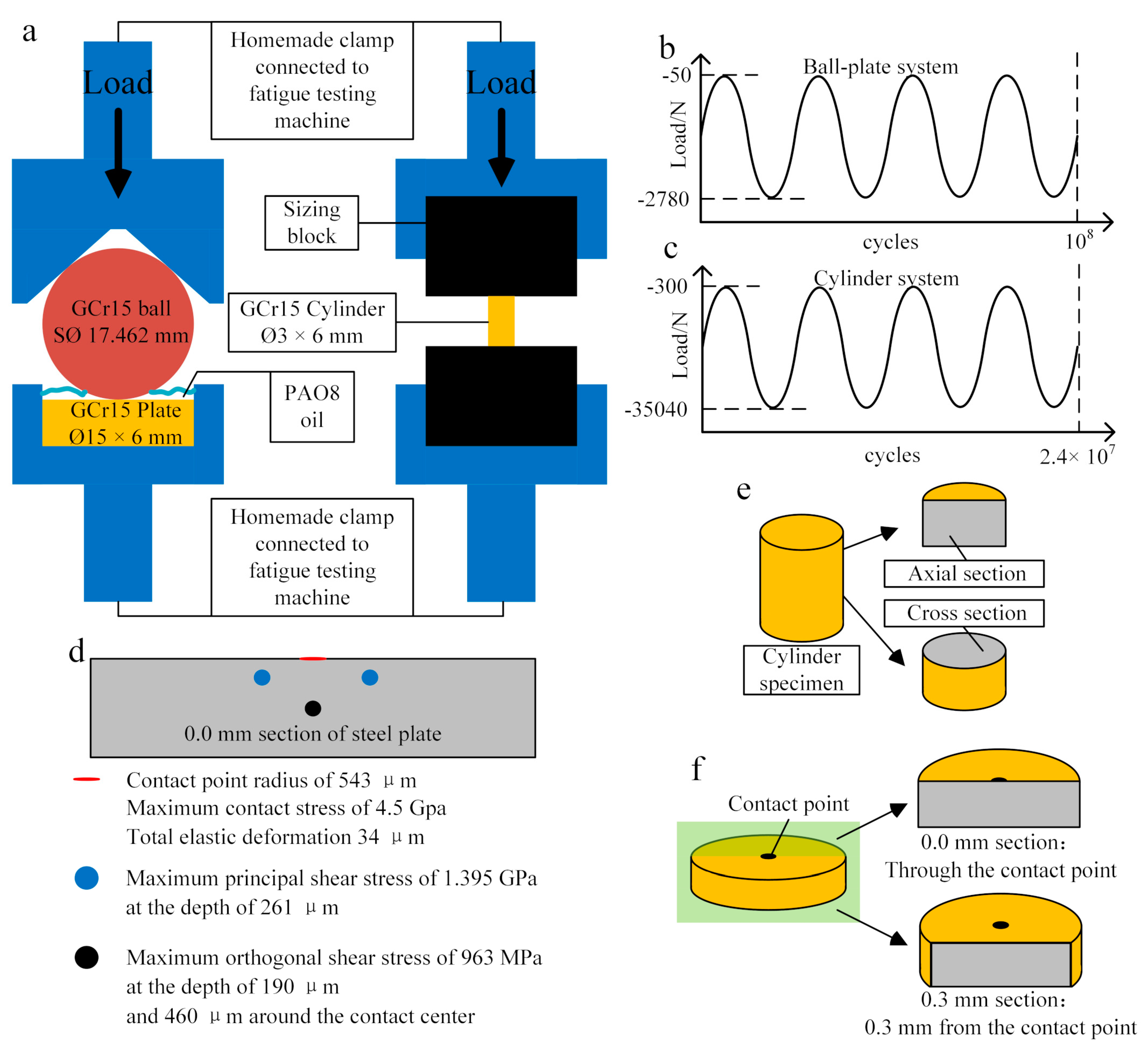

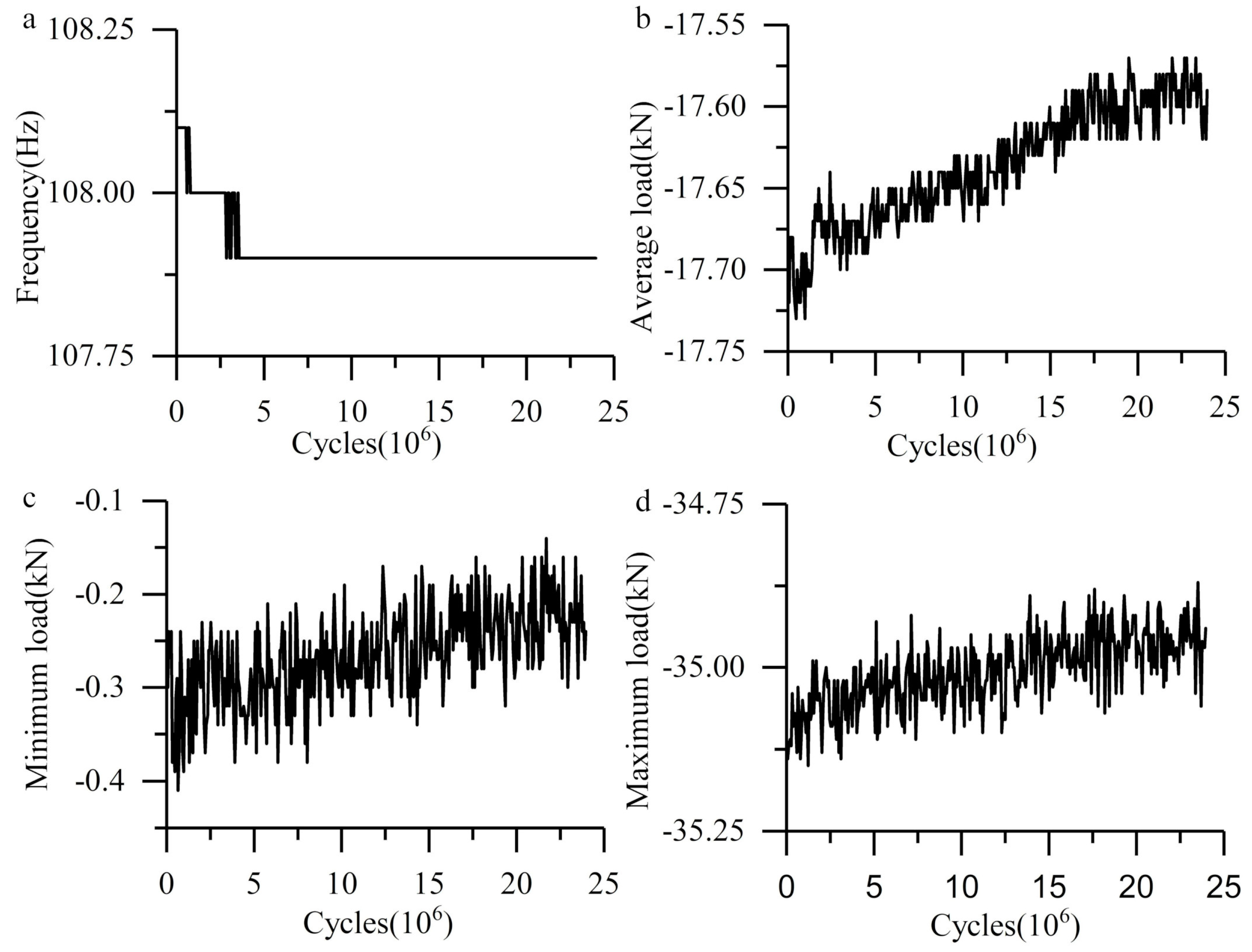
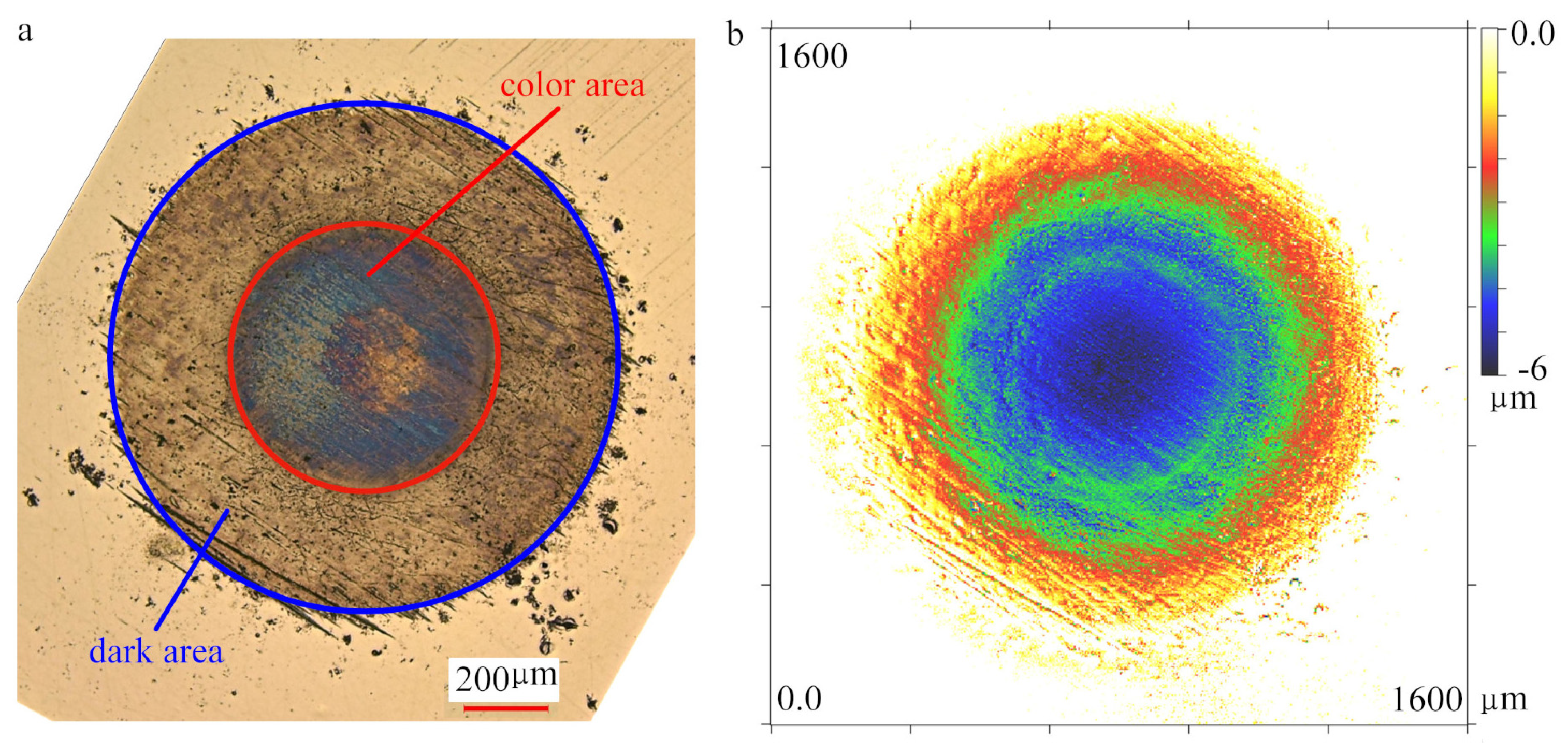
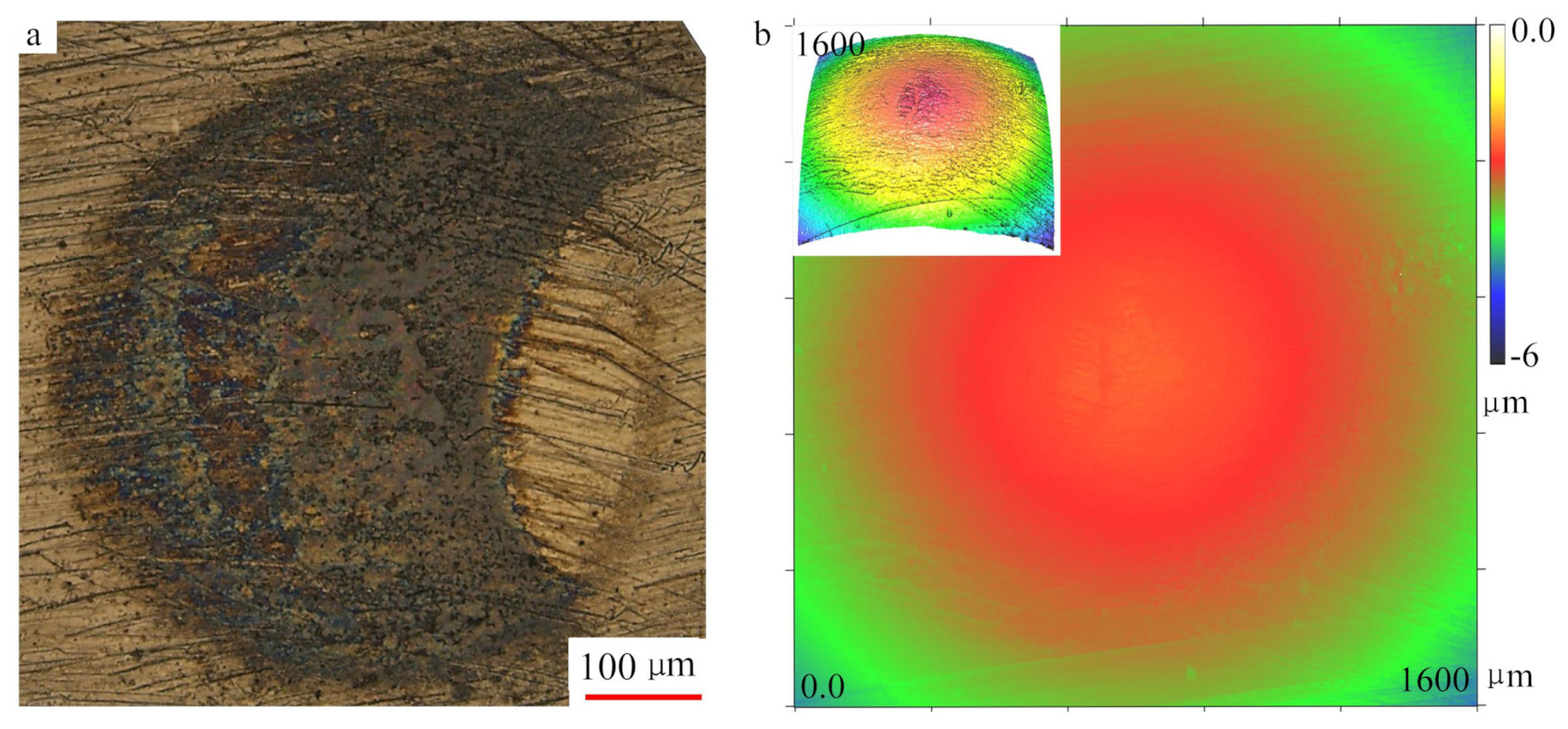
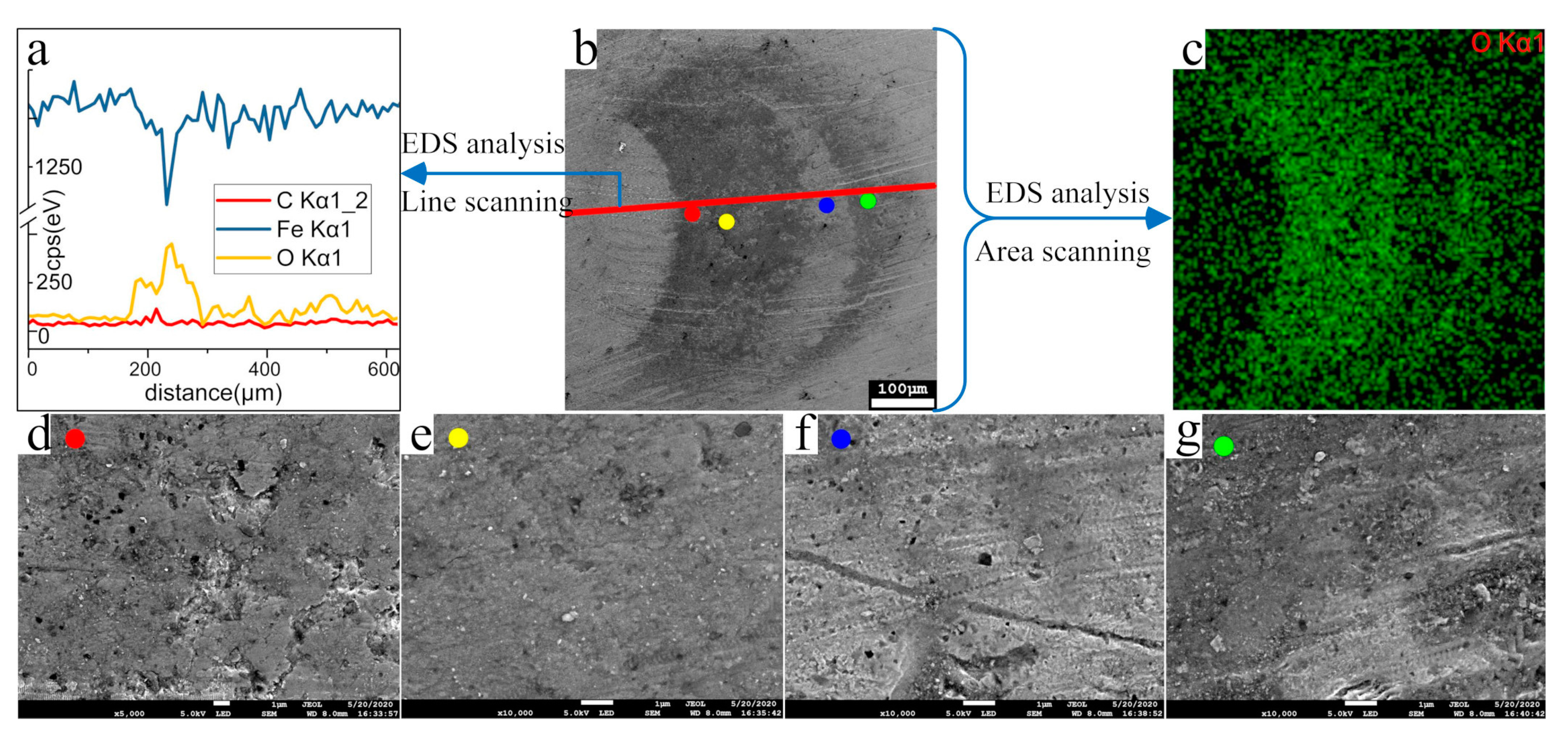
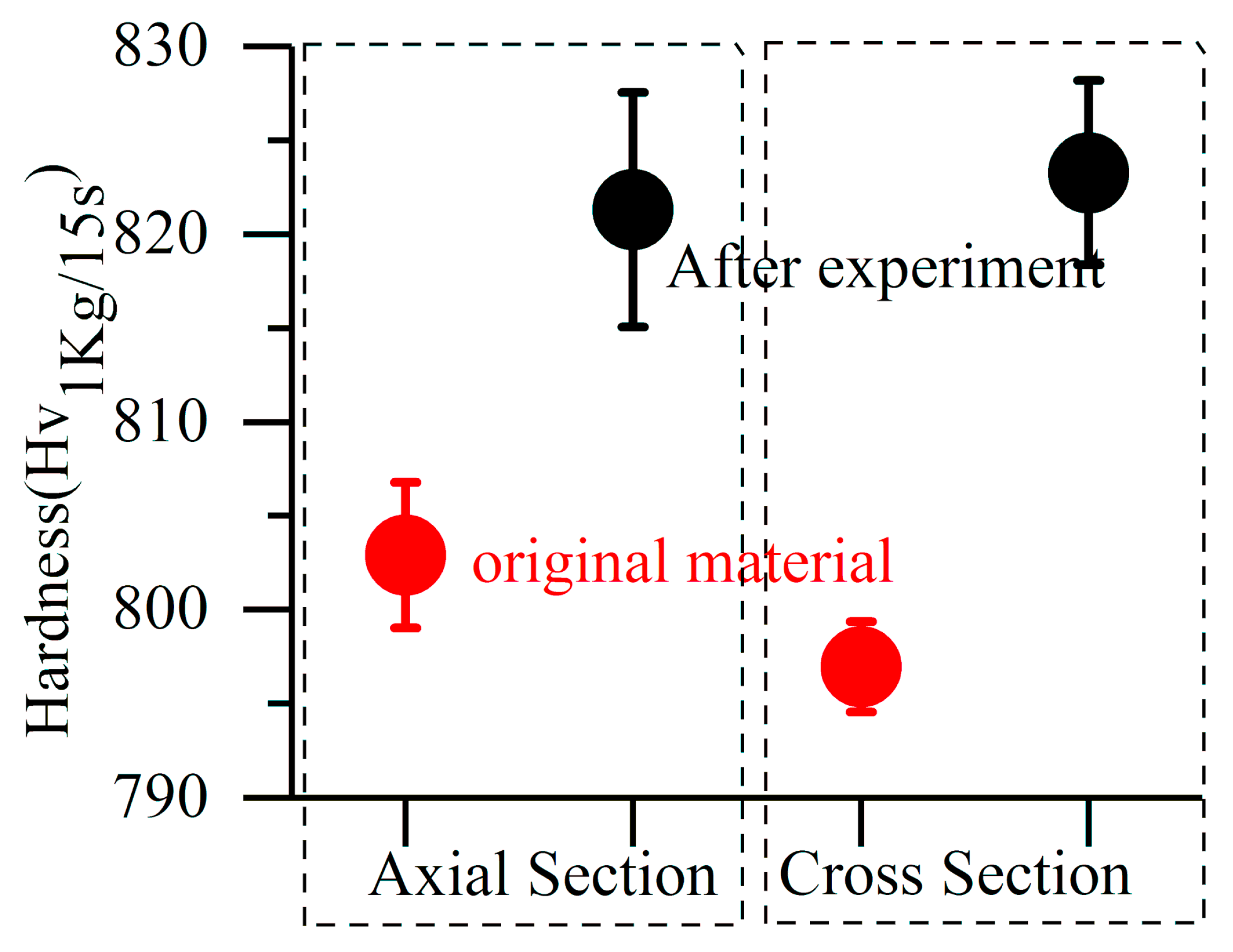

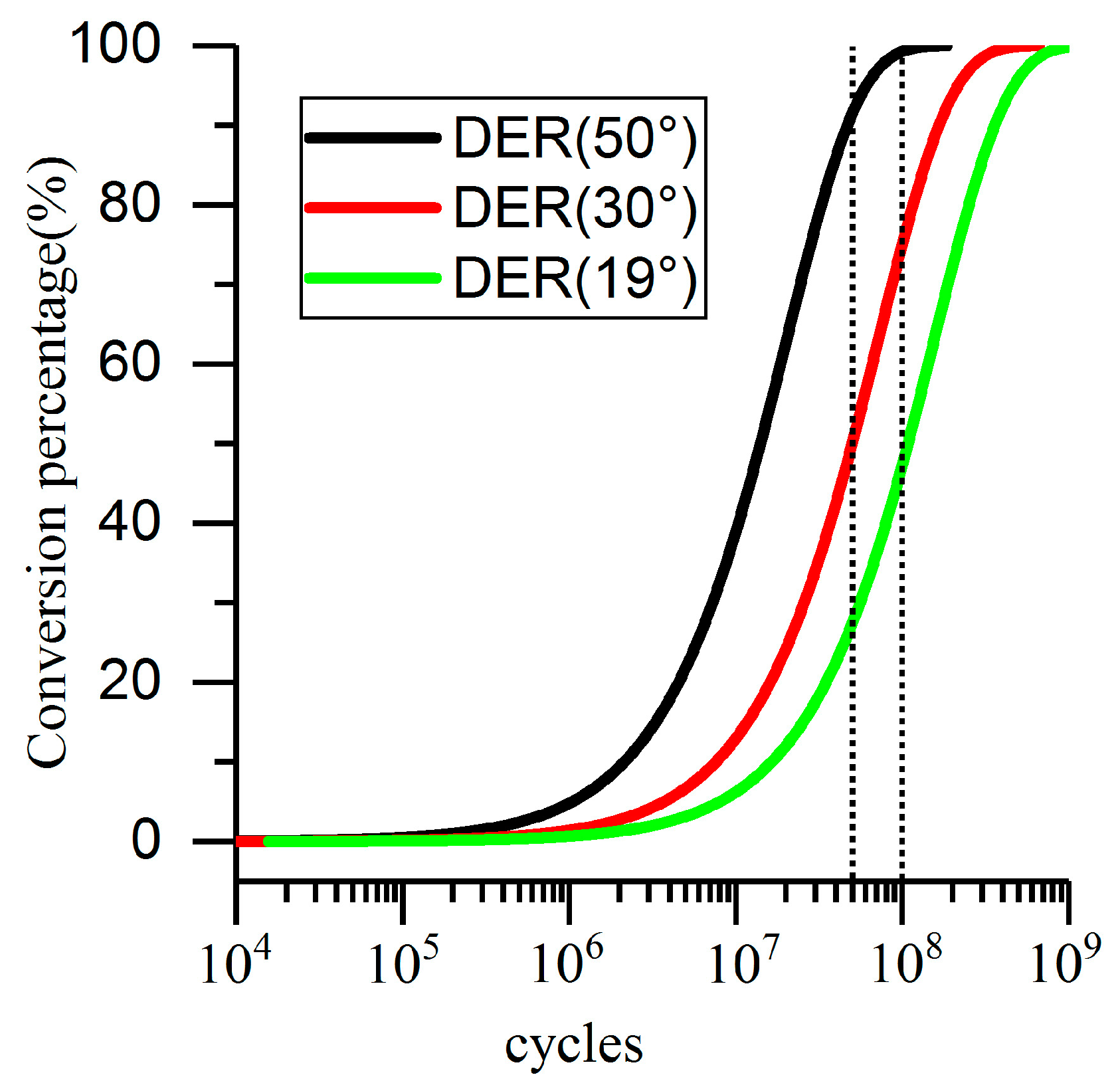


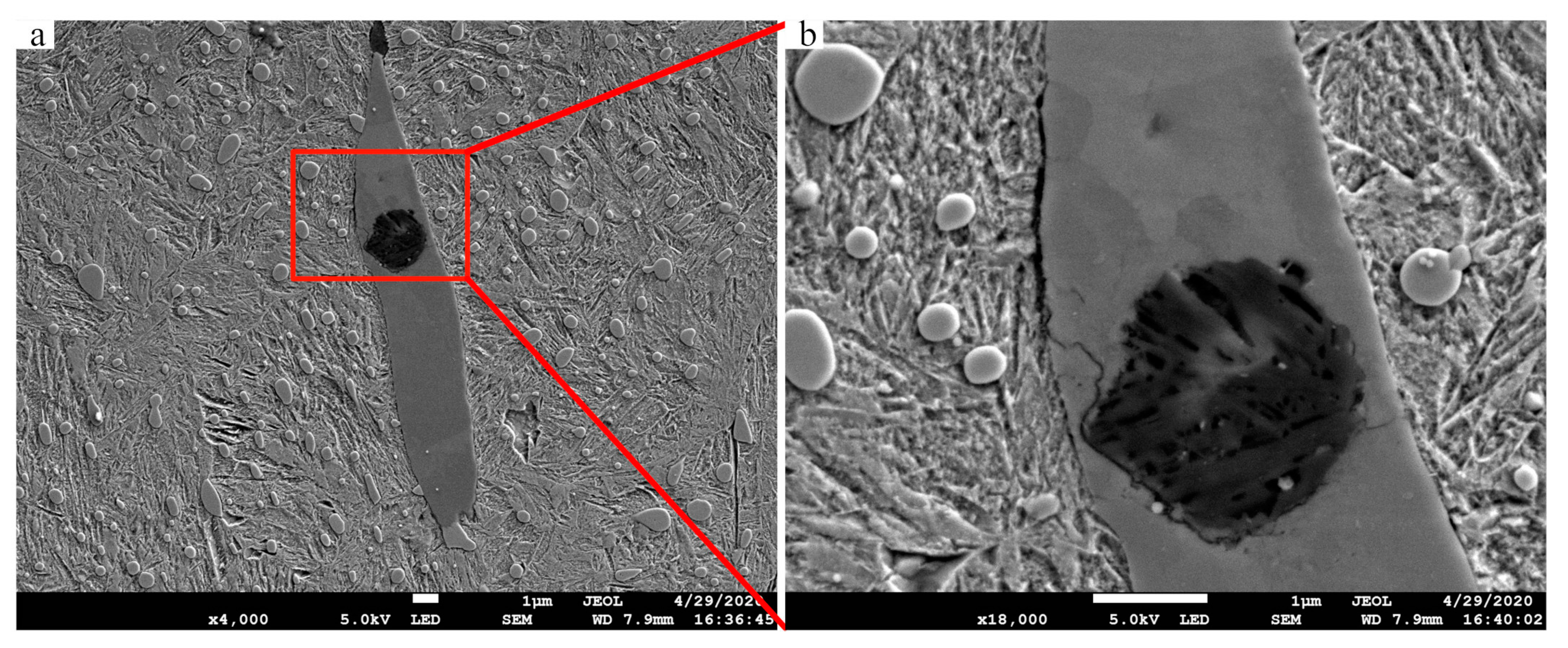
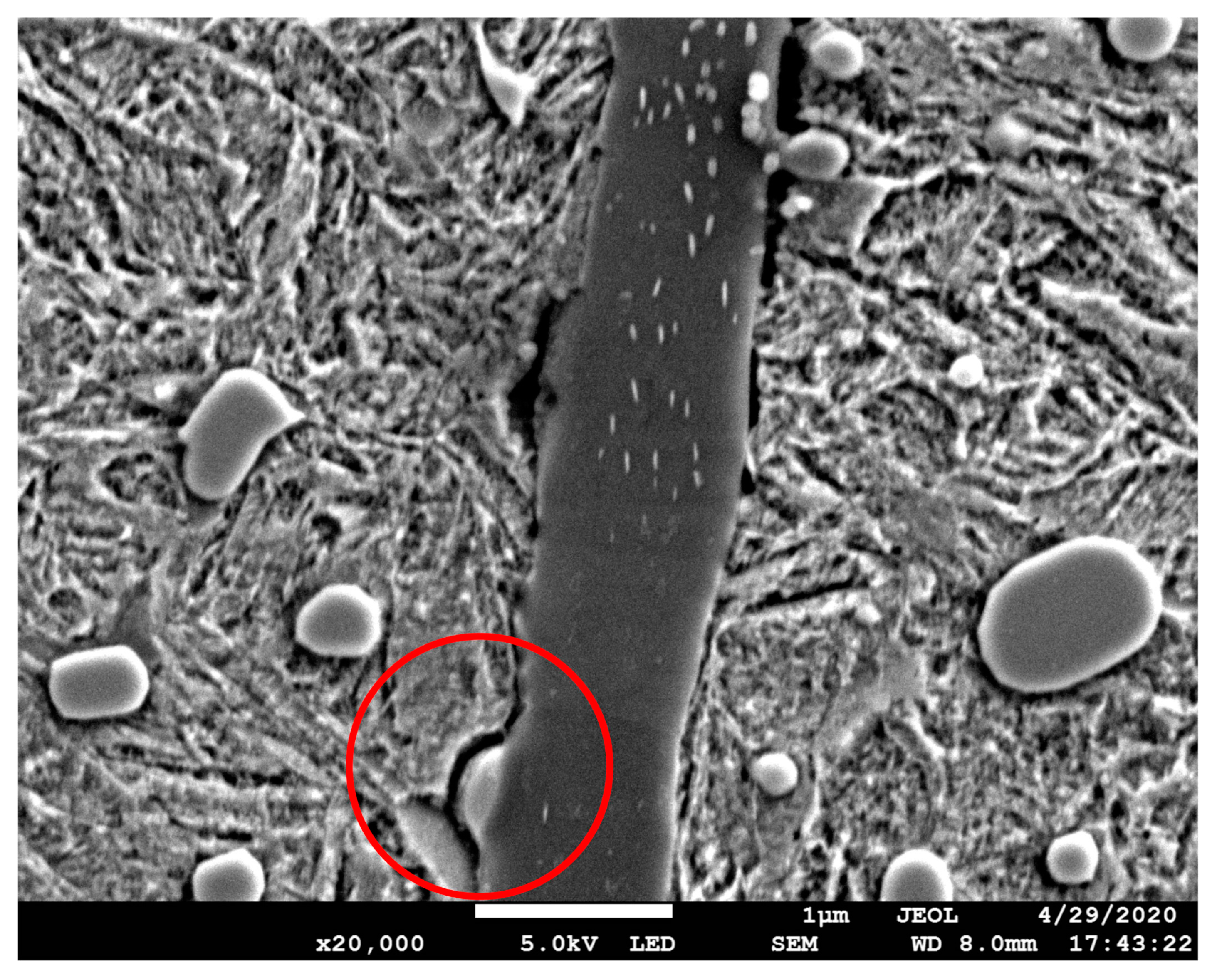
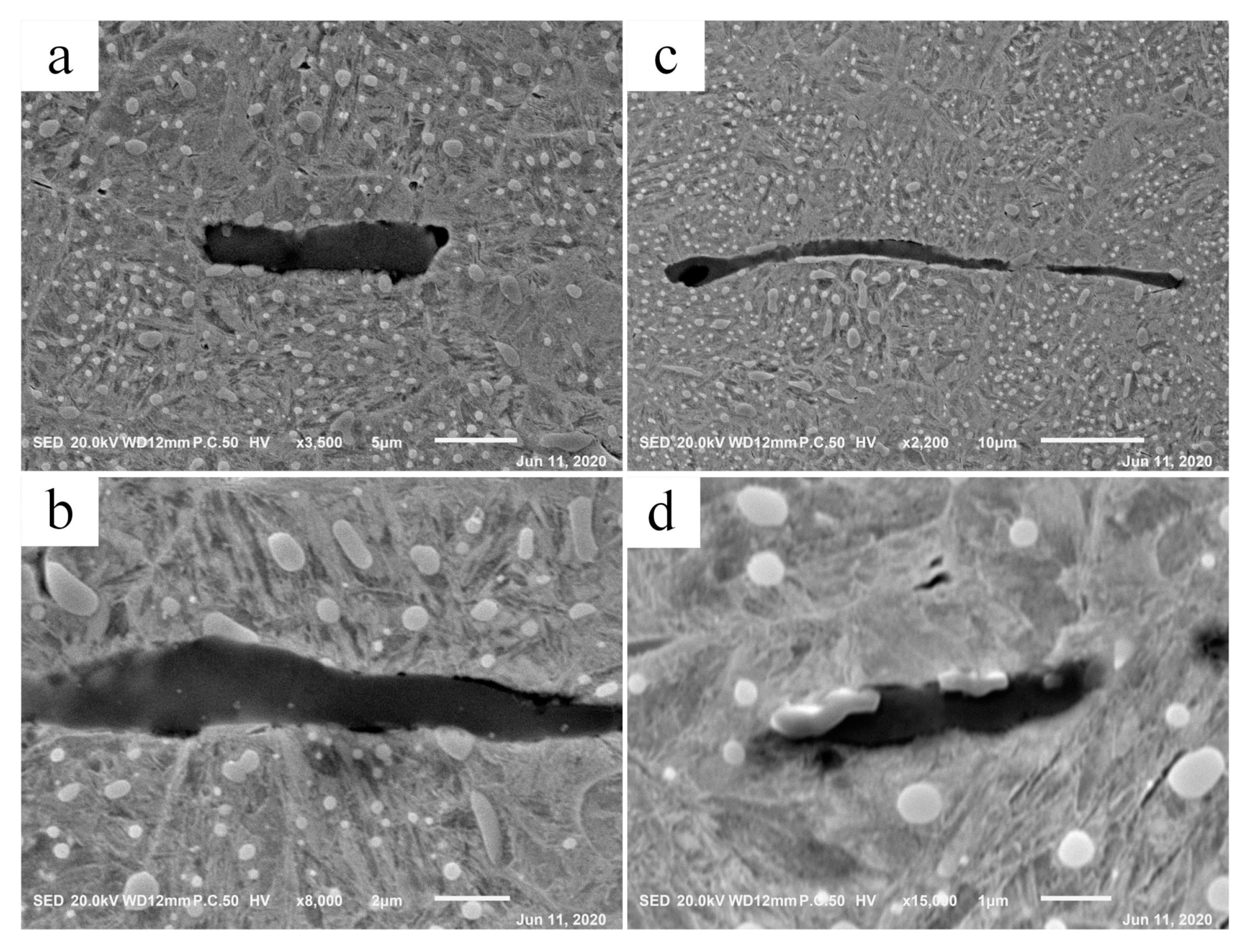

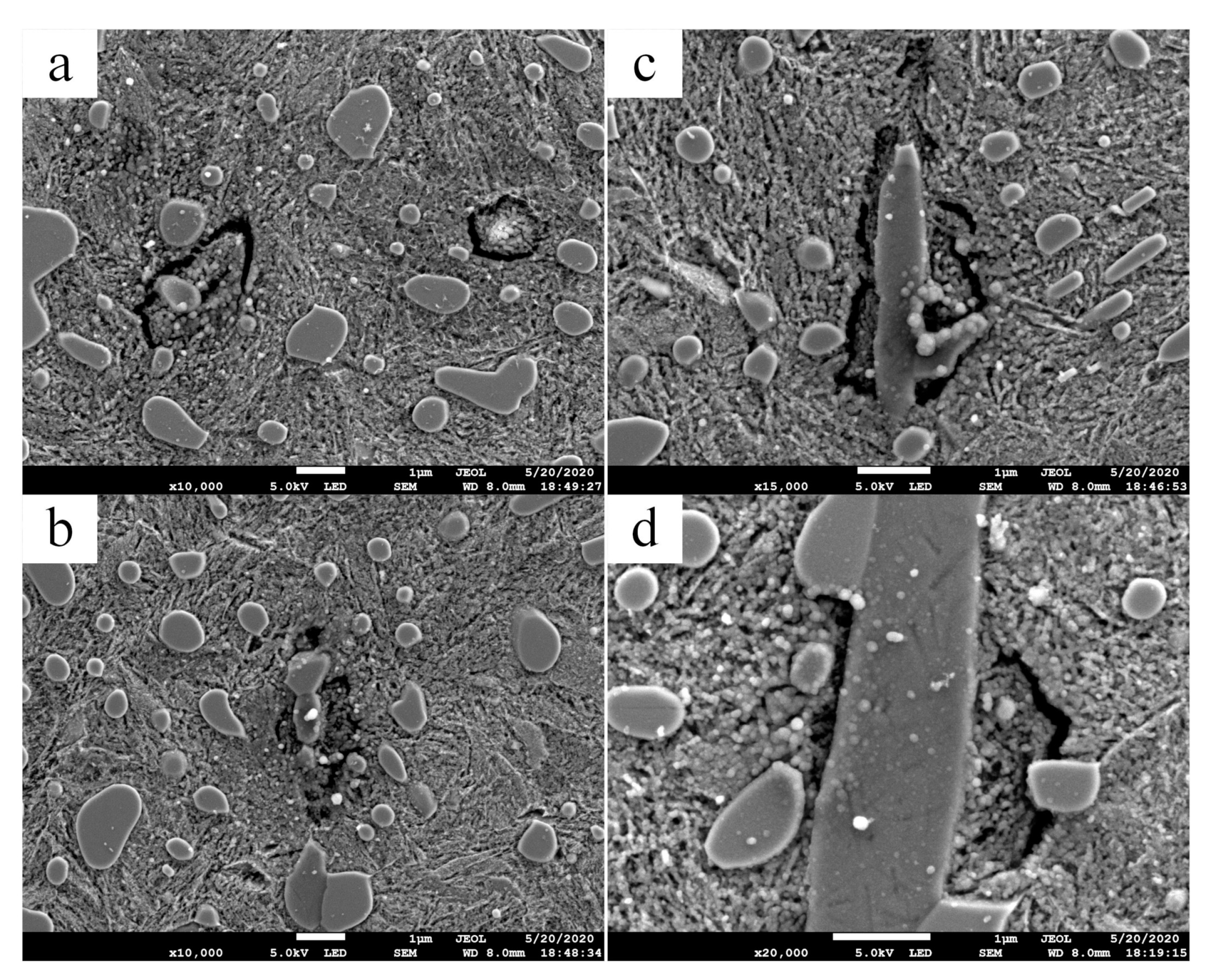

| C | Mn | Si | Cr | Mo | Ni | Cu | S | P | Fe |
|---|---|---|---|---|---|---|---|---|---|
| 0.967 | 0.37 | 0.214 | 1.45 | 0.0165 | 0.0475 | 0.0845 | 0.0045 | 0.0109 | Balance |
© 2020 by the authors. Licensee MDPI, Basel, Switzerland. This article is an open access article distributed under the terms and conditions of the Creative Commons Attribution (CC BY) license (http://creativecommons.org/licenses/by/4.0/).
Share and Cite
Zheng, X.; Zhang, Y.; Du, S. Preliminary Research on Response of GCr15 Bearing Steel under Cyclic Compression. Materials 2020, 13, 3443. https://doi.org/10.3390/ma13163443
Zheng X, Zhang Y, Du S. Preliminary Research on Response of GCr15 Bearing Steel under Cyclic Compression. Materials. 2020; 13(16):3443. https://doi.org/10.3390/ma13163443
Chicago/Turabian StyleZheng, Xiaomeng, Yongzhen Zhang, and Sanming Du. 2020. "Preliminary Research on Response of GCr15 Bearing Steel under Cyclic Compression" Materials 13, no. 16: 3443. https://doi.org/10.3390/ma13163443
APA StyleZheng, X., Zhang, Y., & Du, S. (2020). Preliminary Research on Response of GCr15 Bearing Steel under Cyclic Compression. Materials, 13(16), 3443. https://doi.org/10.3390/ma13163443




